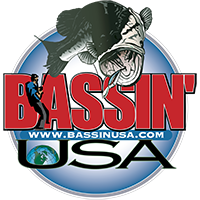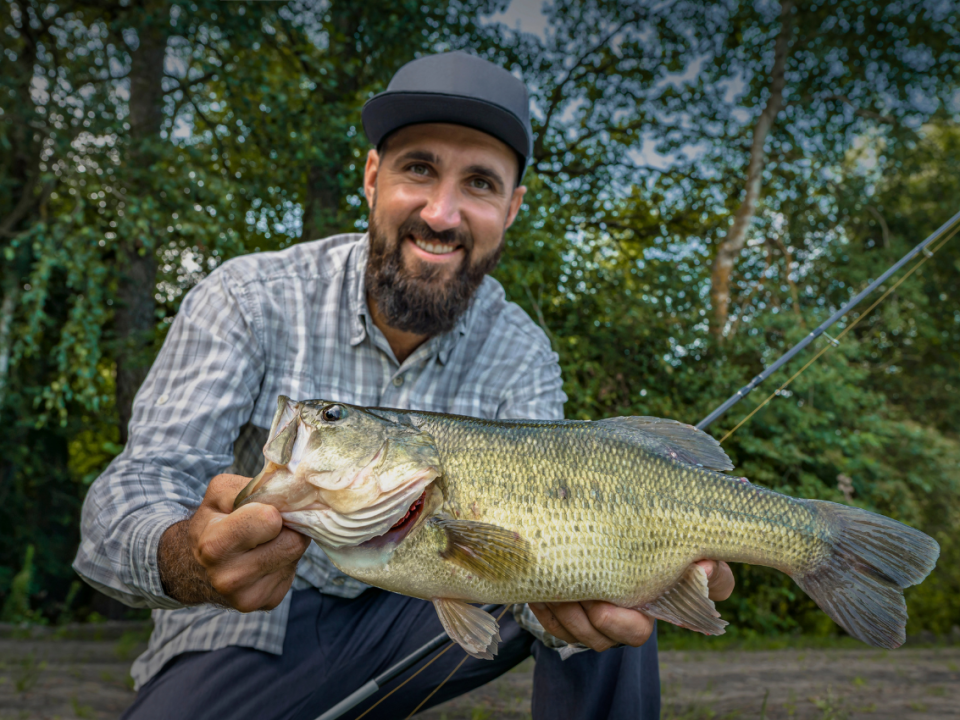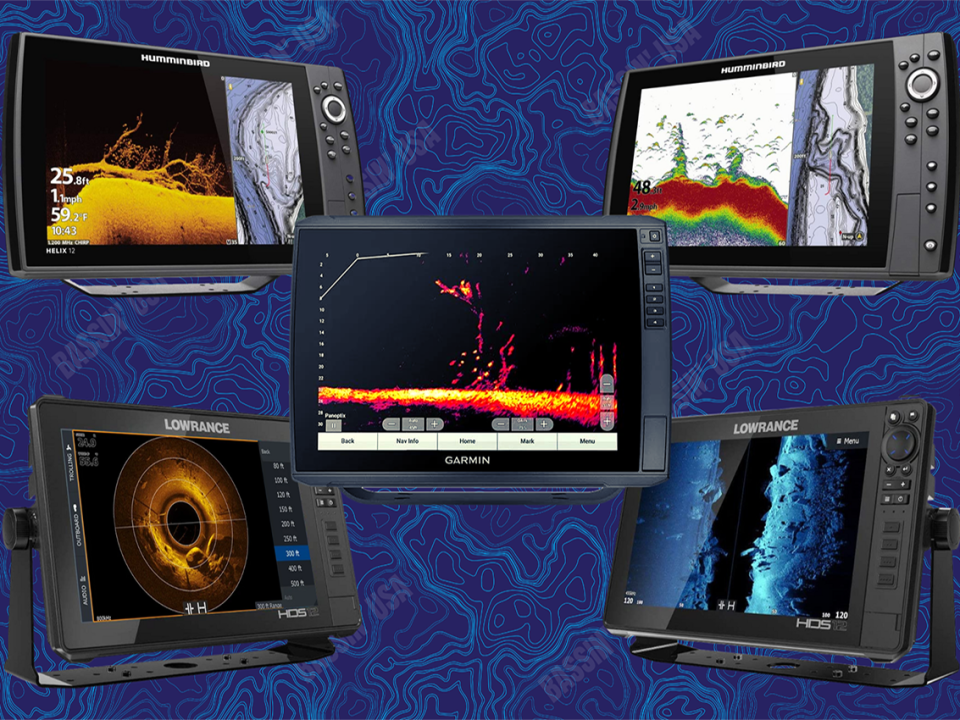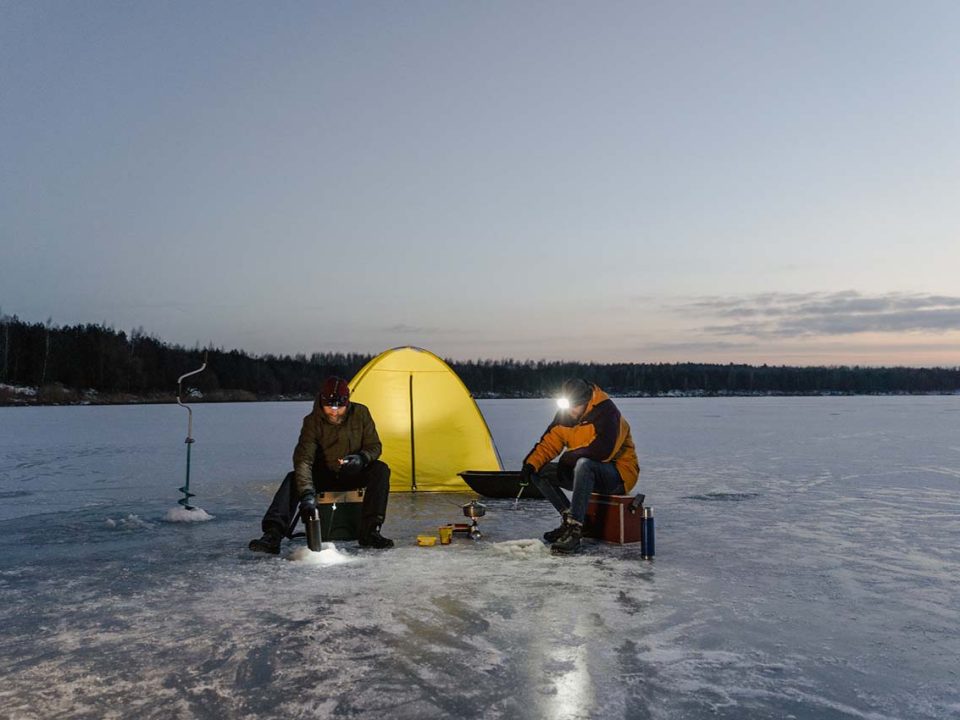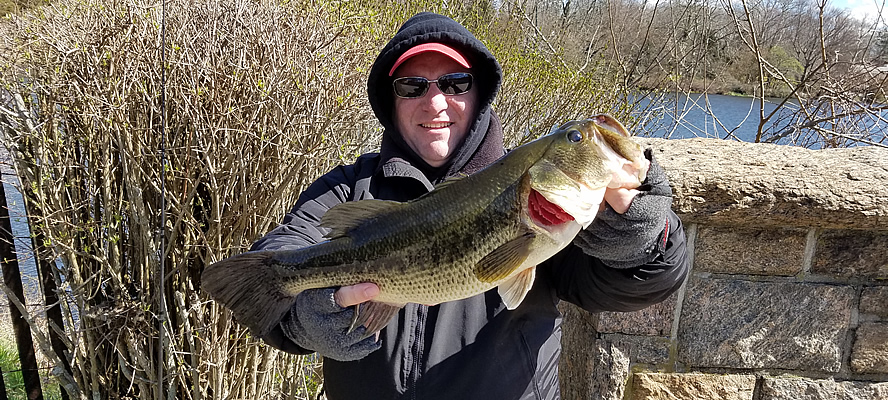
Bank fishing or as some call it shore fishing, is where most of us started out fishing as kids. Today more fishing tips and techniques are targeting anglers who fish from a bass boat, than from the bank. It’s pretty safe to say that not every fishing enthusiast owns a boat, or even knows someone that owns a boat. For those anglers shore fishing is the best option. In our bank fishing guide, we’ve outlined some key factors that will help you get the most out of your next fishing trip.
When you’re fishing from shore, it’s normal to feel that you’re at a disadvantage when trying to catch bass. Although that may be true at times, it is certainly not always the case. It’s great to have a bass boat that gives you the ability to cover a much larger area of a lake and offers you access to many places you simply can’t reach from shore, but it’s not the only way to catch bass. Even though I own a bass boat, and compete in tournaments, I still take time to enjoy fishing from shore. You don’t need to own a boat in order to catch big bass. There are few tips I follow that can help you be a successful shore angler.
Equipment
While bank fishing you can’t really bring your whole arsenal with you, so I try to narrow down my choices to 1 or 2 types of lures and one rod. Even from shore, you still want to be able to cover as much water as possible. Some people wear fishing vests, pants with many pockets (carpenters or cargo pants) or carry small backpacks. Whatever you choose make sure you have easy access to the tackle and tools you need without getting in the way of moving and casting.
I have seen many times where people show up to a lake or pond with a giant tackle box and 4 rods. If you are one of those people, you’re most likely not going to be able to move from spot to spot that easily. Some anglers don’t like to move around a lot. They actually enjoy setting up camp and sitting in one spot all day. That’s fine, but unless you’re in a situation where a large percentage of the bass population is hanging around that one spot, you’re missing a lot of opportunities. Another option to consider is to leave some backup gear in the car. It’s fine to bring a few rods and lots of tackle to choose from. Unless you have a long hike into the woods, you can easily make a pass or two around your favorite spots and then head back to the car to swap out gear. If you’re on foot all the way, limit what you bring. A good multipurpose rod and reel combo and a small selection of lures will serve you just fine. Finesse fishing is a great option for the shoreline angler. Sometimes nothing beats a weightless soft plastic lure on light line (6-8 lb test). Soft plastics fit easily into pockets and make it easier to stay mobile. For a nice compact option, here’s a VIDEO TIP that features an awesome little box tackle box we found:
The last piece of equipment every angler should have is a pair of polarized sunglasses. These are really great for reducing surface glare so you can spot bass and objects under the surface more easily. They also help protect your eyes from sunrays and objects which you may encounter along the way. Ever miss a hook set on a fish and have a lure come sailing back at your face? There’s be more than one time where my sunglasses saved the day.
Take a Stealthy Approach
In general, you can find shallow bass almost all year round on lakes and ponds during spring, summer, and fall. One of the first things I ever learned when fishing from the shoreline was to be quiet and to approach the water slowly. Ever watch a bird stalking baitfish in the shallow water? They don’t just run up and jump in… they creep… slowly… and are careful not to disturb the water surface which could send vibrations through the water and spook their prey. Bass spook pretty easily, and if you want to catch one the last thing you want to do is scare them away. I keep my distance from the shoreline and make longer casts as often as possible. Doing this will give you the advantage over the bass. When you are ready to get closer to the edge, walk slow, and take your time. It does matter what size body of water you are fishing… bass spook just as easily on large lakes as they do on small ponds. So be stealthy and stick with quieter presentations especially when casting into shallow water. I use light Jigs, swimbaits and even weightless soft plastic lures most of the time on the ponds that I fish. A small 4” plastic lure cast low to the water’s surface can also increase your chances of not spooking a bass.
Finding Bass
Big bass like heavy cover and structure. In fact, many times your best chance for catching a big bass is casting into and around shoreline structure or cover. Just to be clear cover and structure are not exactly the same things. Structure relates more to the hard objects that are in the water like a point of land sticking out into the lake or pond, or a high spot or hump under the water. Structure can be man-made or naturally formed. When you think of cover think of weeds, branches in the water, shade, basically anything a bass can use to “cover” itself. If you can find a combination of these two things, the greater chance you’ll have of finding bass. So a rocky point is great, but if it also has weeds, it can be that much better.
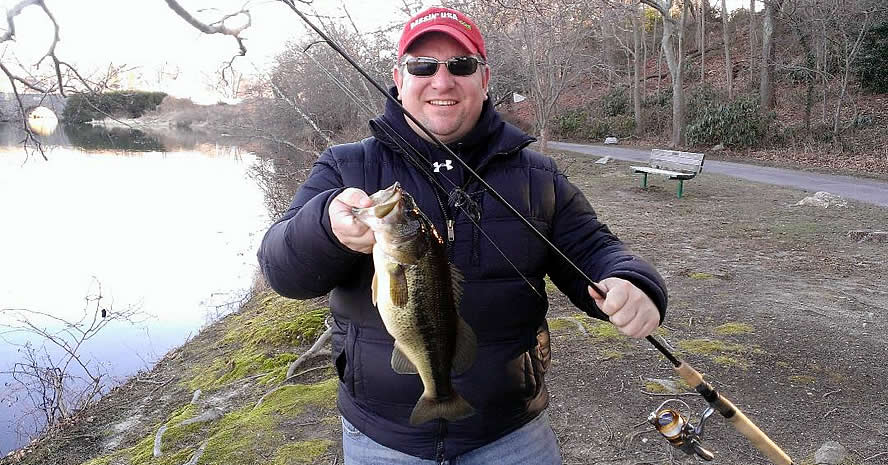
Like I mentioned before bass can usually be found in shallow waters. But what happens if there’s a lack of cover in the area you are fishing? The second most important thing I learned when bass fishing, look at your surroundings. What’s happening on the water, are there blow ups happening, which way is the wind blowing, and are there birds gathered in one area eating bait fish? These are clues as to where you might find bass. Blow-ups are my favorite indicator of where bass are hanging out. I have seen it many times, someone sees a fish blow up and they think they lost their chance, and they never cast over there. Don’t ever overlook a blow up on the water. Reel in fast and cast right next to the boil in the water. It can pay off many times.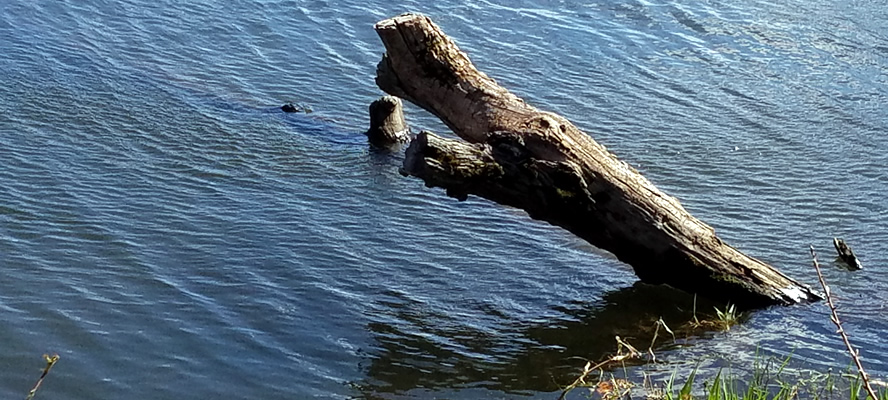
Casting
The last thing I want to discuss is casting. When people go fishing for the first time or they are not experienced, they automatically want to cast overhead and as far as possible. There’s nothing wrong with that if you are casting out into open water. When you’re fishing from shore you want to cast smoothly and quietly. Many times you also have to contend with trees around you. So you need to be aware of your surroundings before making a cast. Nothing ends a single rod fishing trip faster than a serious backlash on a baitcasting reel. Even though you’re on shore, that doesn’t mean the best place to cast is straight out. You want to keep the bait in the strike zone as much as possible, and many times that strike zone is tight up against the bank. So you want to keep your casts parallel to the shoreline most of the time. Especially if there’s a lot of structure or blowdowns. As a bank fisherman, it is equally important to know the different methods of casting such as Skipping, Pitching, Flipping, Sidearm and backhand casting. I used to spend my winters practicing all different types of casting in my living room… my Parents thought I was crazy. On a warm day, I would go out in the yard and practice casting at a small cup or coffee can. Make use of your time if you live up north during the winter… you’ll be thankful you did when you finally get to the lake.
So remember, having a boat isn’t the only way to catch a big bass. Fishing shorelines can produce both numbers and size when targeting bass. Even if you have a boat, take the time to fish the banks, it will help you become a better angler.
See you on the banks!
